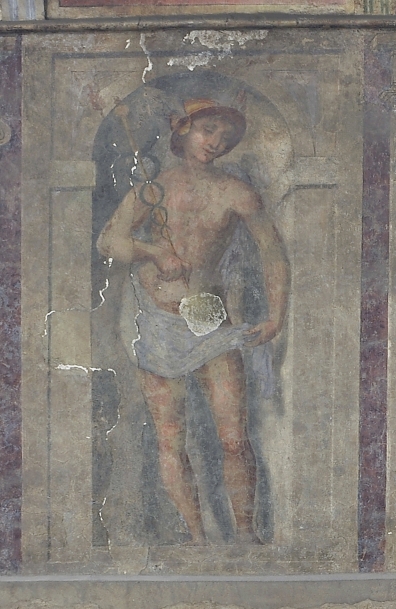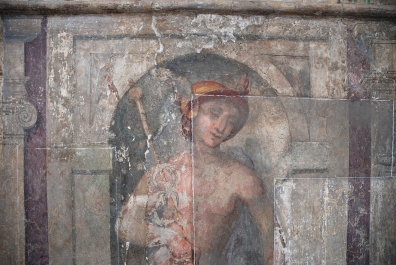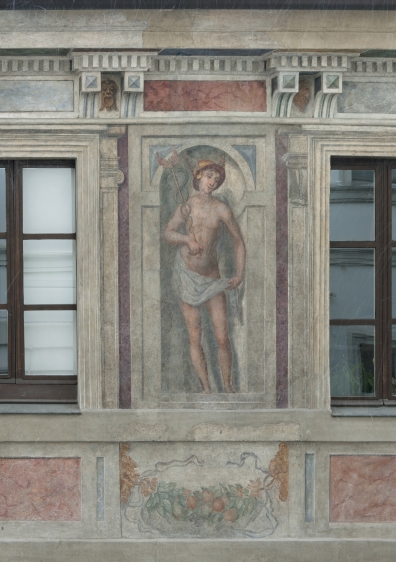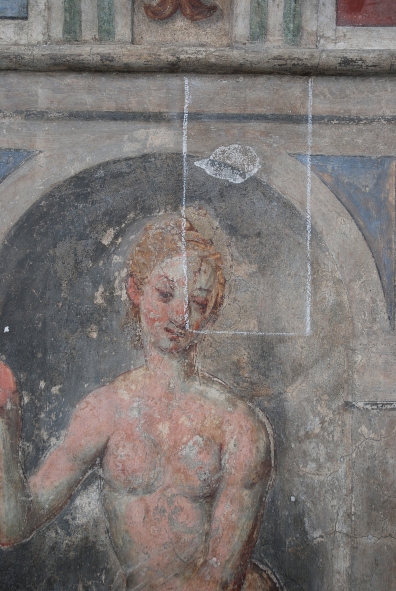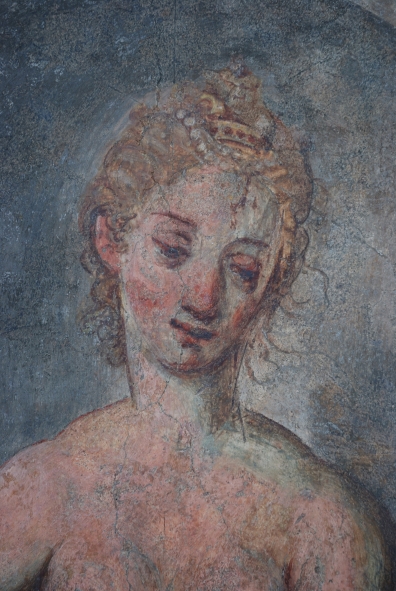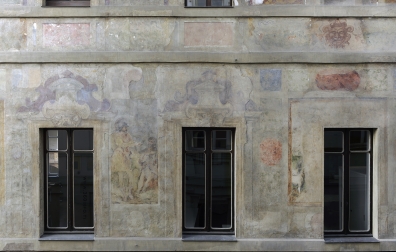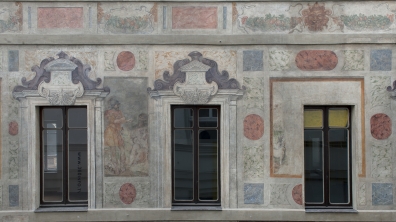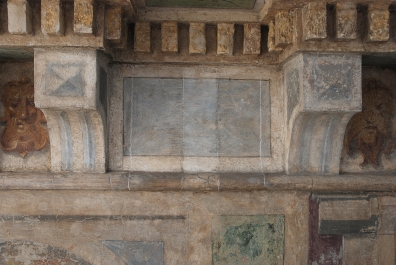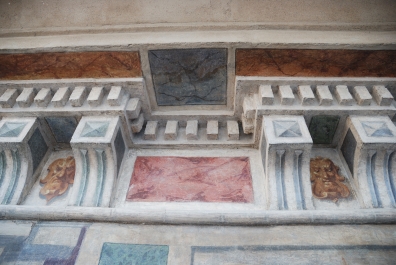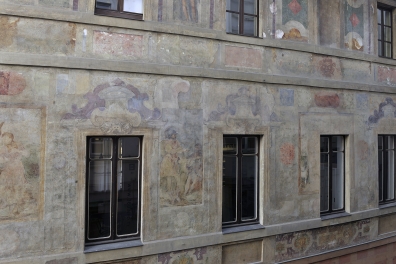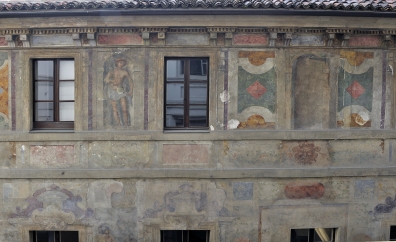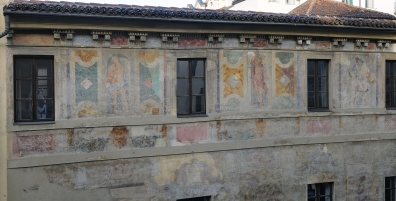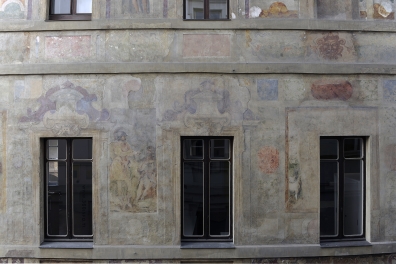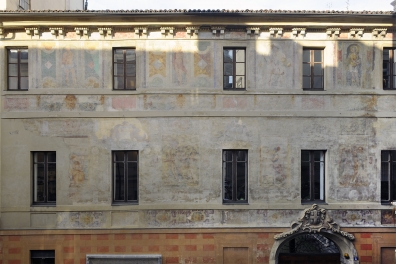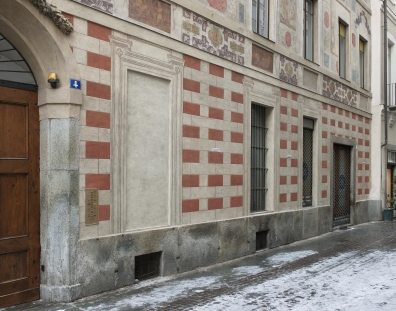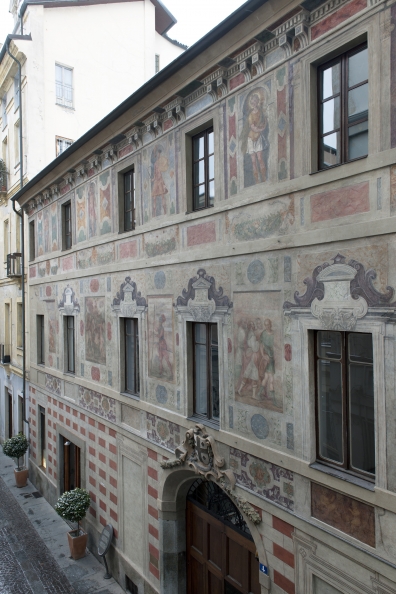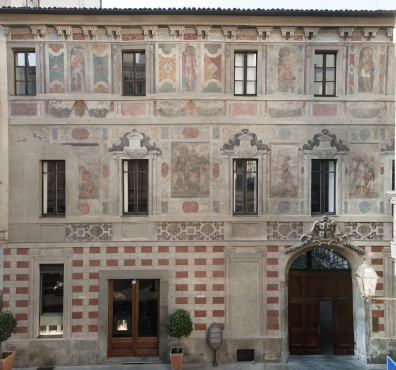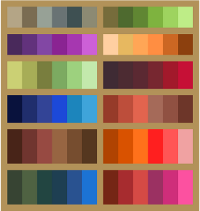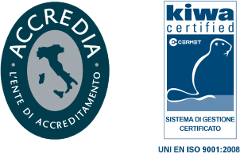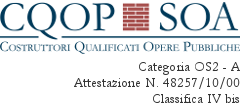The frescoes on the external facades of Palazzo Sambuy
The frescoes by Antonino Parentani (1603) on the external facades of Palazzo Sambuy (formerly Scaglia di Verrua) in Turin
This restoration, complicated from the point of view of methodological choices and very difficult from a technical point of view, also considering its advanced deterioration, was carried out over a period of about three years thanks to the financial commitment of the owners who returned to the city of Turin a rare example of painted facade of early seventeenth century.
Before restoration, the frescoed surfaces appeared extremely dirty due to the overwriting of large deposits of atmospheric particulates, old fixatives and persistent oil-waxy residues due to altered antique renovations. The smoke developed by the explosion of an incendiary grenade, documented by the sources, was also thickened on the surface in a thick fat and blackish deposit tough to remove that compromised the legibility of portions of the pictorial representation.
Direct exposure to atmospheric agents led to the progressive degradation of the original mortars and colours and the alteration of the materials used in previous restorations.
An accurate cleaning carried out in several phases with mixtures of solvents applied to the pack to extract the greasy substances and the dirt penetrated in depth, and with mixtures of chelating agents, surfactants or carbonates, developed from time to time depending on the necessity, allowed to recover the freshness and delicacy of the original colour tones.
The choice was to give back as much readability as possible to the whole, to reconstruct, albeit toned-down, all the geometric architectural scores and to suggest also the dimensions and the volumes of the figures, using the signs engraved on the original plaster.
Based on detailed documentary research before the restoration, the old eight and twentieth-century interventions on the frescoes were identified and traced photographic, iconographic and stylistic reference material used as a comparison for the pictorial reintegration phase of the characters and decorative modules.
Menu
Certifications
Contacts
E-mail:Telephone: +39 0141.90.91.25
Address: Via Mazzini 8, 14020 Aramengo
